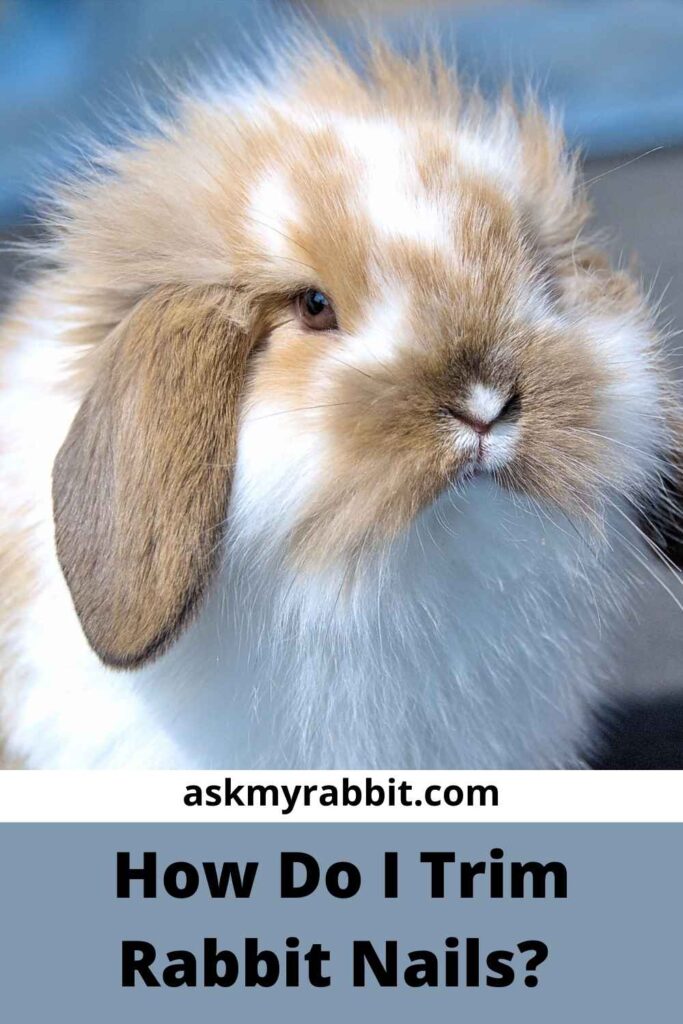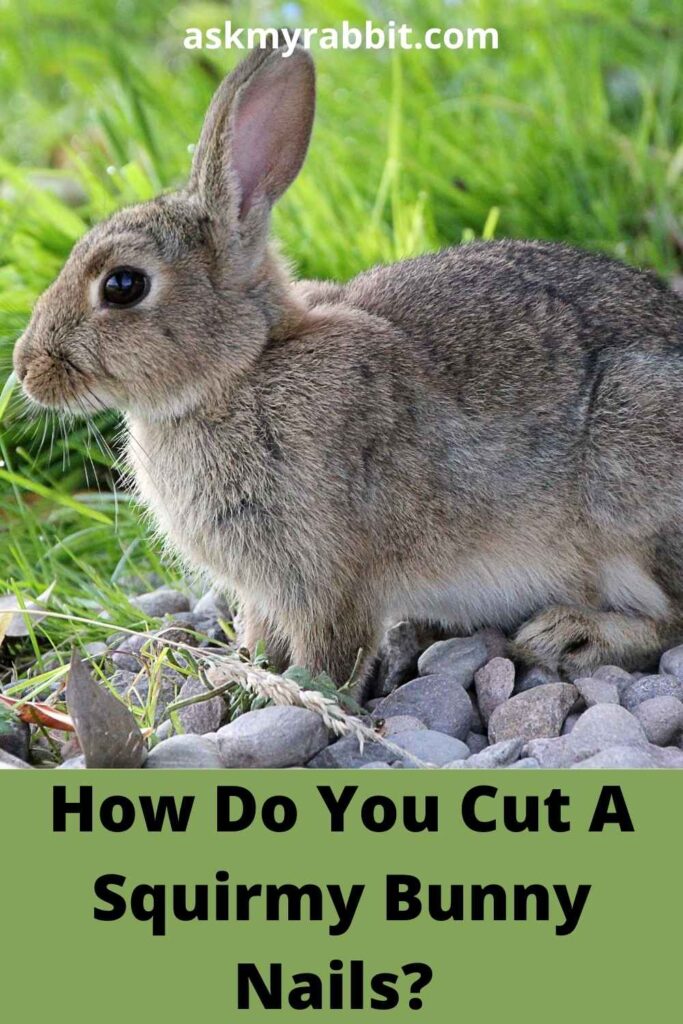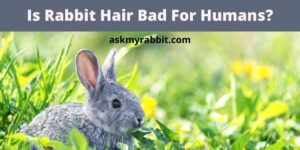Nail clipping is an important element of rabbit grooming. Rabbit nails, like their teeth, develop continually. Therefore, if they aren’t naturally worn down outdoors, they will need to be clipped using nail clippers.
A rabbit may not let you cut his nails as they often kick and resist while you attempt to keep them quiet and clip their nails. Clipping a rabbit’s nails is one of the most challenging aspects of rabbit grooming.
If you’ve never cut your rabbit’s nails before and don’t have anybody to assist you, a pet groomer or veterinarian staff may be able to assist you. If you have a young rabbit, take advantage of the chance to begin clipping their nails. If your rabbit is still young and gets his nails trimmed on a regular basis, they will get used to it.
In this article we will inform you all about rabbits and trimming their nails. So, keep reading!

How Often Do I Clip My Rabbit’s Nails?
At the absolute least, a rabbit’s nails should be cut every three to four weeks. If you leave your rabbit’s nails uncut for an extended period of time, the blood supply (Kwik) will continue to grow out with the nail. This will make it more difficult to cut the nail to the proper length because the nerve in the nail will be too long to cut any shorter.
If you’re too afraid to cut your rabbit’s nails yourself, a vet will generally do it. Of course, doing it at home is far more convenient for you and less stressful for your rabbit.
How Do I Trim Rabbit Nails?

In order to trim rabbit nails, acquire the necessary items as well as a companion to hold your bunny for you. Get everything organized in one spot so you don’t have to start and stop whenever your rabbit is ready for a nail clip.
Get a nice set of cat or rabbit nail clippers, a towel, some styptic powder. Wrap your rabbit in a towel to keep them quiet and secure while being confined.
A rabbit’s back may be injured, so make sure you’re handling them properly and supporting their rear end. Stop the procedure if they begin to struggle.
Reposition your bunny and try again after it has calmed down. You may use snacks to induce your rabbit to be swaddled in the towel by rewarding them.
Trim just the tip of your rabbit’s nails once it has been covered in the towel and has calmed down. It’s considerably preferable to trim your nails in modest increments rather than trying to cut them completely off after they’ve grown too long.
If your rabbit’s nails are clear or white, you can see the pink blood supply. You should be able to cut just before it without causing bleeding. Always avoid cutting the quick since it will bleed and cause pain to your rabbit.
Clippers should be placed on the nail where the cut will be done. Squeeze the trimmers slowly to cut the nail, and if the rabbit flinches, proceed a little closer to the nail’s tip. To prevent crushing the nail, make the cut with a forceful, quick stroke.
Don’t be alarmed if a nail is accidently trimmed too short. To halt the bleeding, quickly put some styptic powder on the end of the nail. While cutting the quick is painful, the styptic powder has a numbing chemical that will help your rabbit feel better.
If you mistakenly cut a quick, there’s no need to panic unless the nail has been substantially shortened. Follow these instructions for all of your rabbit’s nails.
If your rabbit is suffering or the treatment is taking too long, take a break. This is particularly critical if you’re using a towel as a restraint to keep the rabbit from overheating.
Once you’ve trimmed as many toes as your rabbit will allow, double-check that none of the nails are bleeding.
Lastly, give your bunny a treat. Even if you just finished one foot, make sure to provide positive reinforcement and training to your rabbit.
Is It Bad To Not Cut Your Rabbit’s Nails?

Yes, it is bad to not cut your rabbit’s nails. The nails of rabbits should be clipped as needed.
Individual rabbits may need different treatments. However, in general, if their fur is becoming too long, it may be cut.
Your veterinarian can clip your nails and instruct you how to do it safely and at the proper length. It’s crucial not to cut the nail too short. This might result in bleeding and discomfort.
It’s a good idea to start getting your rabbit acclimated to having their nails stroked and cut at a young age. While you’re pruning, feed your rabbit some nice carrot tops. Always give your rabbit a pat or a nutritious food treat for calm behavior.
Some rabbits are terrified of having their nails trimmed. So, if a rabbit doesn’t enjoy having their nails cut, it might be because they are afraid of the procedure.
To begin, make sure the rabbit gets ample daily activity. If the rabbit’s nails still need to be trimmed, attempt desensitization. This is progressively acclimating the rabbit to nail clipping in very tiny incremental increments.
You may reward calm behavior and ignore undesirable behavior by halting the session if the rabbit becomes unhappy.
Place the nail trimmers in your rabbit’s line of sight as a first step. Encourage calm behavior. Then gradually increase the distance between the nail trimmers and work up to nail trimming.
If your rabbit becomes agitated at any stage, pause and try again the following day. Work your way up to a previously successful level and stay there until your rabbit is at ease and ready to go on to the next phase.
How Do You Cut A Squirmy Bunny Nails?

Claw trimming is an important aspect of keeping your rabbit healthy. Regularly trim the rabbit’s nails to prevent them from overgrowing, breaking off. It may also perhaps impair his ability to hop.
Long nails are a health threat for your rabbit. Some people prefer to take their rabbits to a vet or another specialist. However, with patience and experience, you can easily trim claws at home.
In order to cut your squirmy bunny’s nails, examine your rabbit’s claws. Because rabbit nails grow at varied rates, there is no set guideline for how often they should be cut. Inspect your rabbit’s nails once a month.
If the nail curls in any way, it is excessively long and should be trimmed. When your rabbit leaps, you may hear his nails striking the floor. This is another sign that it’s time to cut his nails.
Wild rabbits don’t need pedicures since their claws are worn down by digging, foraging, and other daily activities. Domestic rabbits, on the other hand, do not use their claws nearly as frequently as wild rabbits. It is your responsibility as a pet parent to ensure that they do not get too long or sharp.
Pick up a nail clipper. Rabbit claws are frequently trimmed using both dog and cat claw trimmers. Make sure you choose a clipper that fits your rabbit’s size.
If you have a little rabbit, a small pair of clippers will make cutting its claws much simpler. Some nail clippers include a safety feature that prevents you from cutting too much.
Squeeze the handle, and the nail will be sliced by a blade. Guillotine clippers may provide a modest advantage over scissor clips in terms of control.
To halt bleeding, have a styptic on hand. It’s conceivable that cutting your rabbit’s nails too short can cause them to bleed. Each of your rabbit’s claws has a blood artery. This may bleed abundantly if clipped.
Styptic powder aids in the formation of clots. Therefore, have some on available while clipping your rabbit’s nails. To stop the bleeding, take a pinch of styptic powder and dab it on the bleeding site. As a coagulant, you may alternatively use normal baking flour.
Styptic pencils and powder may be found at most drugstores. Styptic pencils allow applying the anti-bleeding ingredient fast and uncomplicated. They may be easier to come by than pure styptic powder.
Make a request for assistance if you’ve never clipped a rabbit’s claws before. It may be difficult to control the animal while clipping the nails. While you work on the nails, a companion can keep the rabbit stable. You may cut the rabbit’s nails yourself if no one else is present.
Your bunny should be at ease. If you speed the operation, the rabbit may get stressed. If your rabbit is nervous, it may thrash about and panic while you attempt to confine or trim it.
Before you begin the cutting procedure, softly hold the rabbit on your lap and rub it. Wait for your rabbit to calm down. Your bunny should be calm, quiet, and breathing deeply. It’s presumably at ease if its eyes are closed or half closed.
Restrain your bunny gently. It’s critical to keep your rabbit motionless while you cut his nails. If they feel threatened, they may panic and squirm about.
Keep your bunny quiet and immovable by being kind, firm, and comforting. Rabbits are delicate creatures. If you handle them too harshly, you risk injuring them. Hold him in place and apply pressure only if he begins to resist or flees.
Never push down on the back or spine of the rabbit. Breaking a rabbit’s back is simple as it doesn’t take much.
Apply gentle pressure to your rabbit’s flanks if he panics and struggles. The sides of his torso and the haunches of his legs make up his flanks. This pressure simulates being squashed together in a burrow with other rabbits. It might help a stressed-out rabbit relax.
Keep the bunny close to your body. Place the rabbit on the edge of a table. Then hold the bunny against your body with your forearm.
In most cases, you’ll need to sit while doing this. Cup your hand under his chest and force his hindquarters toward you with your elbow. Ascertain that your rabbit is at ease in this posture. If he starts to struggle, just hold him securely.
As though you were holding a new-born, try cradling the bunny on your lap. The rabbit’s back should rest on your knees. Its head should rest in the crook of your elbow. With one hand, hold out a paw while clipping with the other.
How Long Should Rabbit Nails Be?
A rabbit’s nails do not need to be maintained at a certain length. When the nails on your rabbit’s feet start to protrude beyond the fur of their feet, it’s time to remove their claws.
This is the easiest method to tell whether your rabbit’s nails are becoming too long for most breeds. This may not work for short-haired and long-haired rabbit breeds, though.
Rex rabbits with shorter hair have nails that curl more quickly than other rabbit breeds. As soon as you see that small curl starting to emerge on these rabbits’ nails, you should consider trimming them.
If you wait for longer haired angora rabbits to attain fur length, their claws will be excessively long. For these breeds, keep an eye on them and trim them a bit earlier.
It’s already been too long if the nails have begun to curl noticeably. As soon as possible, you should trim them. Similarly, if your rabbit’s nails are too long for them to hop about comfortably, they need to be trimmed straight soon.
Frequently Asked Questions
Is It Bad For Rabbits To Have Long Nails?
When a rabbit’s nails grow long, the angle at which it places its feet alters. However, it’s crucial because it causes the joints to wear out more quickly since they’re moving in an unnatural manner. Long nails are readily grabbed and ripped, sometimes completely out of the nail bed.
What Happens If A Rabbit’s Nails Keep Growing?
Rabbit nails that have grown out of control may do more than scratch you. They may become caught on a carpet or other surface, breaking the nail or dislocating the toe. Their claws may curl inward, causing the rabbit to walk in an unusual manner. It’s important to keep an eye on your rabbit’s nails and cut them every couple of months for their health.
How To Trim A Rabbit’s Nails?
Clipping a rabbit’s nails might be challenging. One of the most difficult components of rabbit grooming is this. While you’re trying to keep them calm and cut their nails, they’ll frequently kick and protest. If you ever feel unable to trim your rabbit’s nails on your own or are concerned that you may cut the quick, you can take your rabbit to the veterinarian who will do it for you.
Final Words
A rabbit’s nails will naturally wear down in the wild as they go about their daily lives. Burrowing and sprinting in tough soil and rocky terrain offer the required wear and tear to prevent their nails from becoming too long.
Rabbits, on the other hand, do not have the same harsh activities to prevent their nails from becoming too long. We must do our bit as caregivers by keeping an eye on their nails and trimming them when required.
Look for the vein that goes up the middle of each rabbit’s nail before cutting it. If you can’t find this vein, gently squeeze the clippers before cutting.
Try cutting closer to the tip of the nail if the rabbit pushes their foot away. It’s simpler to do this with two people. However, it may also be done by oneself.
Drop down your queries regarding your furry bunny’s nail trimming habits in the comment section below. We will answer them soon!






